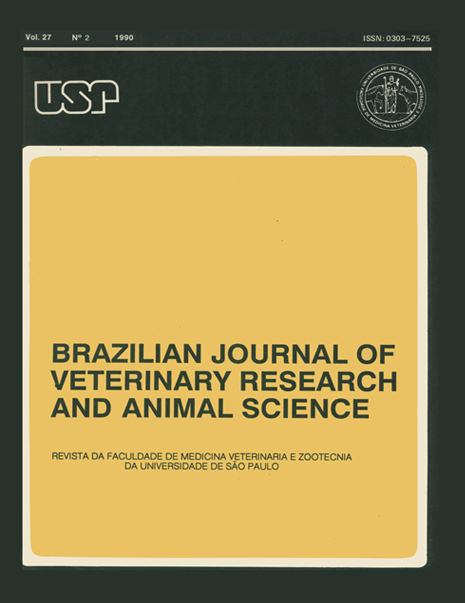Outdoor cultivation of Spirulina maxima. I. Winter
DOI:
https://doi.org/10.11606/issn.0000-0000.272153-162Keywords:
Cyanobacterium, Protein, Spirulina maximaAbstract
Biomass of photosyntethesizing microorganisms has a tremendous potential for both human and animal feeding due to their over 50% protein content on a dry matter basis. Cultures kept in laboratory require an artificial source of light for their satisfactory growth whereas the large scale production systems take advantage of solar light. Thus, these systems are also afected by environmental conditions such as ambiental temperature, culture temperature, relative humidity of air and rainfall.The effect of these factors in winter season on production of Spirulina maxima biomass were evaluated. Also protein content as well as amino acids profile were determined. A biomass production graph plotted against
period of day (morning, afternoon and evening) indicated that the best production period was from 8:00 a.m. to 1:00 p.m. while a growth curve showed maximum yield of 8:08 g/square meter/day. Lack of rainfall and water losses due to evaporation required reposition of water equivalent to 72.14 mm of rain.
Downloads
Download data is not yet available.
Downloads
Published
1990-12-02
Issue
Section
BASIC SCIENCES
License
The journal content is authorized under the Creative Commons BY-NC-SA license (summary of the license: https://
How to Cite
1.
Ruiz RL, Mos EN, Lima CG de, Ribeiro MAM. Outdoor cultivation of Spirulina maxima. I. Winter. Braz. J. Vet. Res. Anim. Sci. [Internet]. 1990 Dec. 2 [cited 2024 Apr. 19];27(2):153-62. Available from: https://revistas.usp.br/bjvras/article/view/51847





